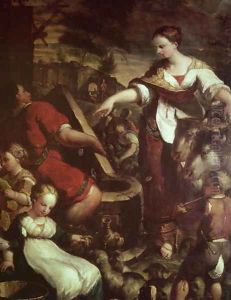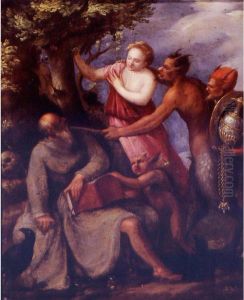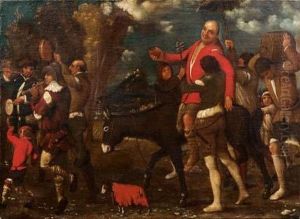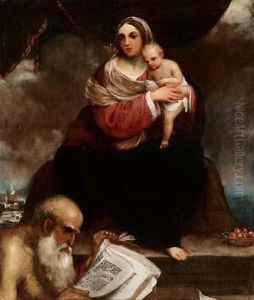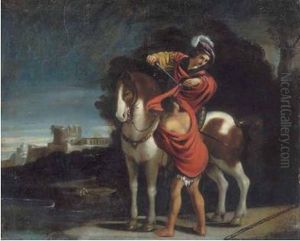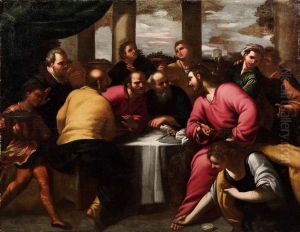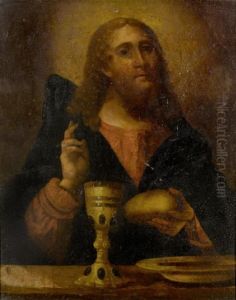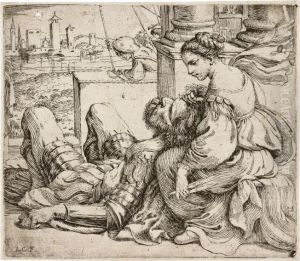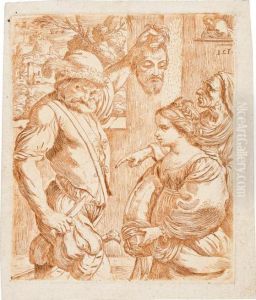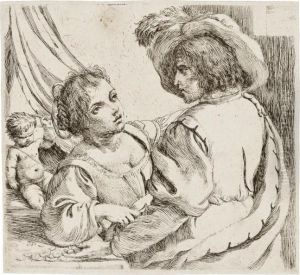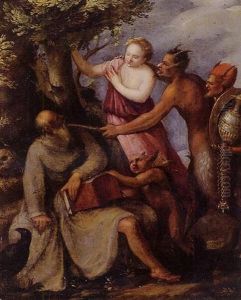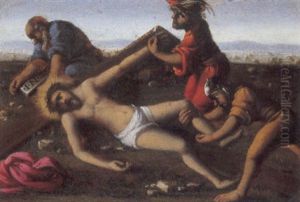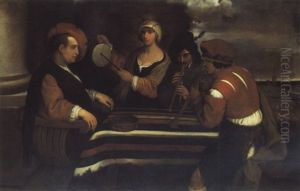Giuseppe (Il Cremonese) Caletti Paintings
Giuseppe Caletti, known as Il Cremonese or Il Cremona, was an Italian Baroque painter who was born in 1600 in Cremona, Lombardy. He was active during the 17th century, a period marked by the Baroque style that dominated European art. Caletti's work and life are not as well documented as some of his contemporaries, leading to a certain level of obscurity surrounding his figure.
Caletti's artistic career was primarily based in Ferrara, where he contributed to the local artistic landscape. He was influenced by the works of the Carracci family and other Bolognese painters, as well as the Venetian School, particularly the works of Jacopo Bassano. Despite these influences, Caletti developed a distinctive style characterized by quirky, often genre scenes, and sometimes bizarre or humorous subjects that diverged from the mainstream Baroque.
The artist's oeuvre includes a variety of subjects such as religious themes, portraits, and genre scenes. His paintings often featured common people, such as beggars and street musicians, which was somewhat unconventional for the time. Caletti showed a preference for using a more naturalistic approach to these subjects, moving away from the idealized figures that were popular among his contemporaries.
Caletti's works were appreciated for their originality and his ability to imbue them with a sense of humanity and realism. However, his tendency to stray from the grandeur and drama of the High Baroque meant that he did not achieve the same level of fame as some of his peers. Despite this, he maintained a successful career and his paintings were sought after by collectors during his lifetime.
Giuseppe Caletti passed away in 1660 in Ferrara. Today, his works can be found in various art collections and museums, and he is recognized as a unique voice within the Italian Baroque movement. His contributions to art stand as an example of the diversity of styles and subjects that existed during this rich period of artistic production.
